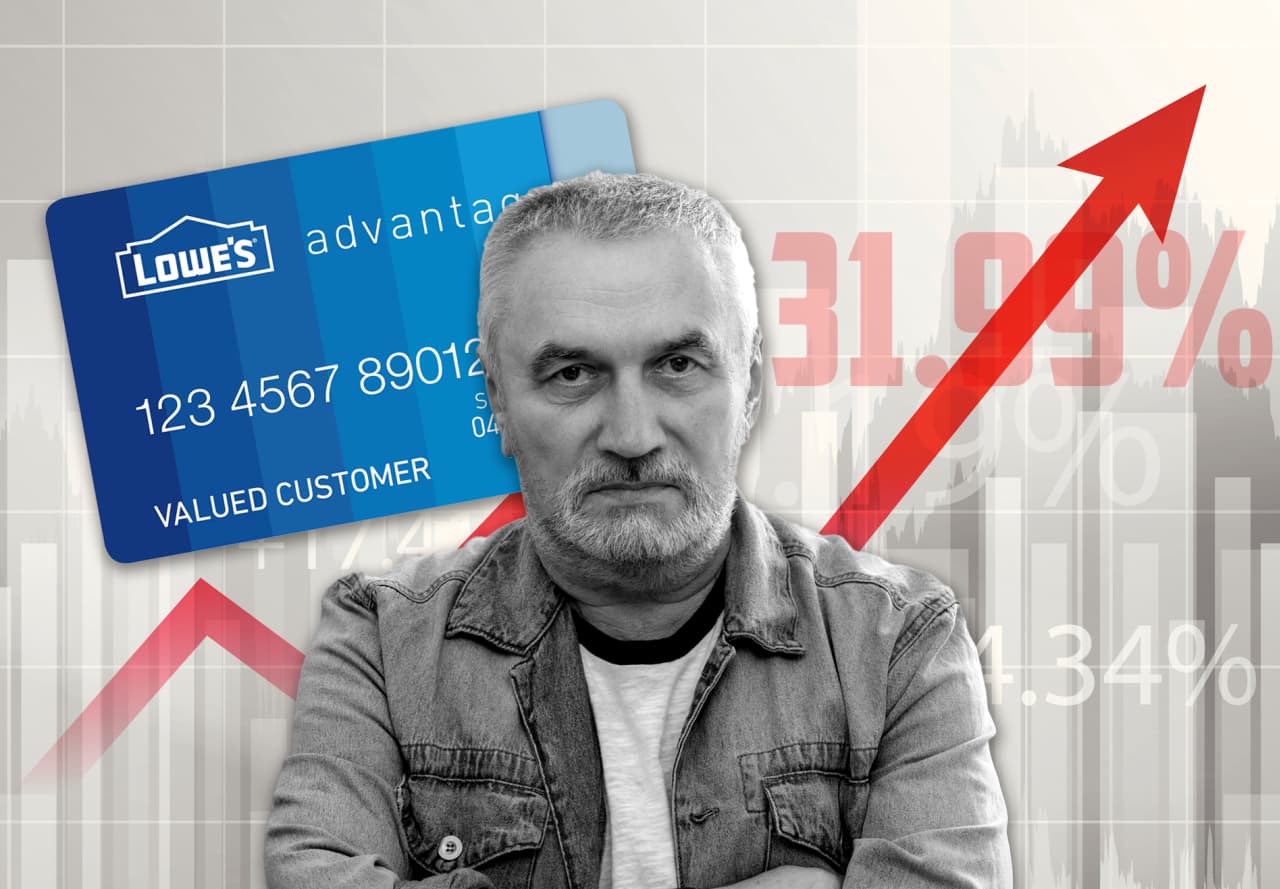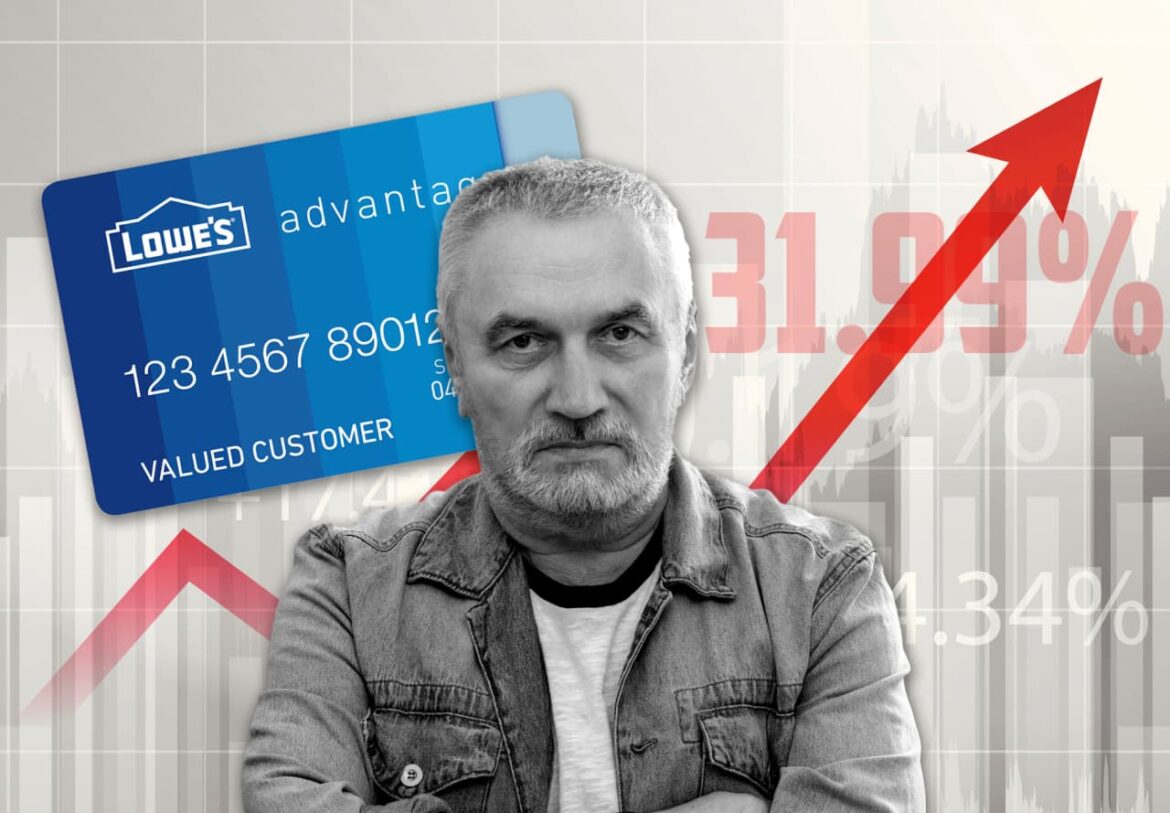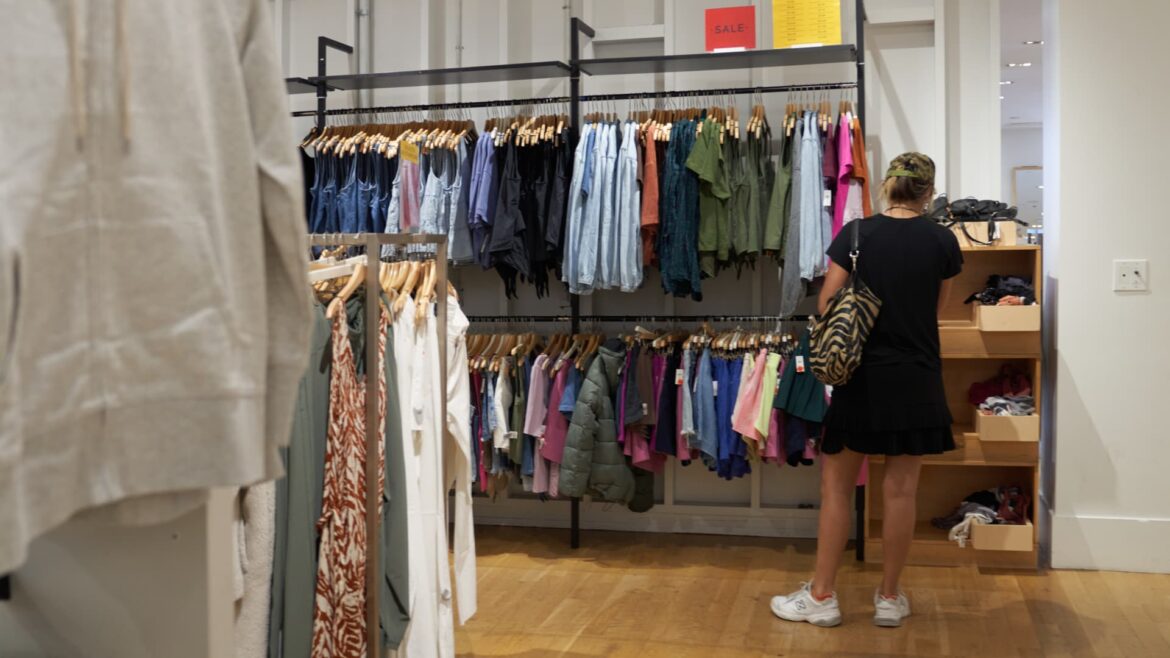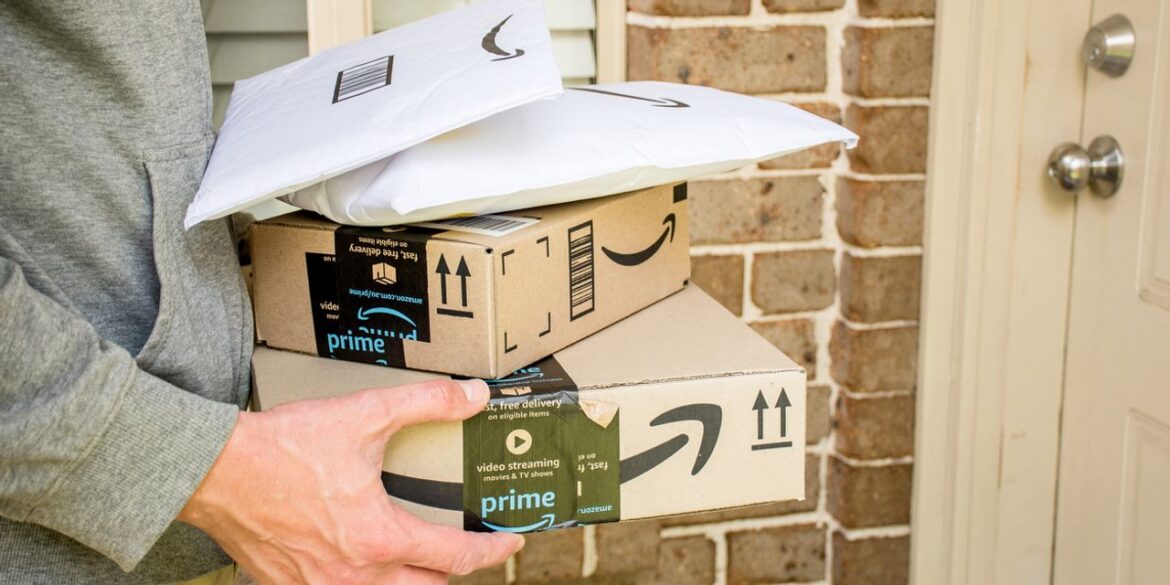
“These interest charges could be astronomical on a big purchase,” says one credit-card expert.
Source link
Card
‘I’m Sure I’m Going To Die Penniless’ — Almost Half Of Gen X, The ‘Lost Generation,’ Has More Credit Card Debt Than Savings — Even the ‘Broke’ Millennials’ Are Faring Better

Generation X, often referred to as the “Lost Generation,” finds itself in a precarious financial situation, wedged between the money struggles of millennials and Gen Z on one side and the relative stability of baby boomers on the other. According to a recent Bankrate survey, 47% of Gen Xers (ages 44-59) have more credit card debt than emergency savings.
This statistic paints a picture of Gen X falling behind all generations, with millennials (ages 28-43) faring only slightly better at 46% having more debt than savings, and Gen Z (ages 18-27) at 32%. On the other end of the spectrum, baby boomers (ages 60-78) appear to be in a more comfortable position, with 68% having higher emergency savings than credit card debt — the highest percentage among all generations surveyed.
Don’t Miss:
-
The average American couple has saved this much money for retirement — How do you compare?
-
For many first-time buyers, a house is about 3 to 5 times your household annual income – Are you making enough?
The survey data highlights the financial tightrope that Gen X is walking, sandwiched between the debt burdens of millennials and Gen Z, often referred to as the “broke” generations, and the comparatively well-prepared boomers. This Lost Generation moniker takes on new significance as Gen Xers struggle to build a financial safety net amid competing demands of supporting their children and aging parents.
Greg McBride, chief financial analyst at Bankrate, points out the strain many households are facing, stating, “Financing purchases at 20% interest rates is a sign of the financial strain millions of households are feeling.”
The survey also revealed that Gen Xers were the most likely generation to report having less emergency savings than they did a year ago, with 34% admitting to a decline in their financial cushion.
Pew Research Center’s examination of Generation X highlights their significant role as a bridge between the notably different baby boomers and millennials. Despite their critical economic and social position, Gen Xers have often been overlooked in discussions about demographic, social and political changes. Their financial outlook is notably more pessimistic compared to other generations, partly because of the economic stresses associated with middle age.
Trending: If the average American household is a millionaire, why do people feel so broke?
This bleak reality was echoed on Reddit, which posted an article about Gen X having the largest wealth gap. In the comments, one user wrote, “I feel like I did everything they told us to do and be successful, and I’m sure I’m going to die penniless.”
Another lamented, “I myself have been a casualty of multiple economic downturns, notably the 2008 recession … and, well, it’s not looking good for me.” A third user pointed out, “There’s no safety net under capitalism, but millennials are not the enemy. They’re allies.”
As the generational divide widens, Gen X finds itself at a crossroads, caught between the financial challenges of their children’s generations and the looming retirement prospects of their parents’ cohort. Navigating this middle ground will require a concerted effort to prioritize both debt reduction and consistent savings — a balancing act that many Gen Xers are still struggling to master.
it is never too late (or too early) to start working toward financial stability. Consulting with a financial adviser can play a pivotal role in helping people across all generations to assess their current financial situation, set realistic goals and create a plan to achieve these goals.
Financial advisers can offer tailored advice on a range of strategies to reduce debt, increase savings and plan for retirement, ensuring that individuals are taking proactive steps toward financial health. Whether it’s exploring options to consolidate debt to lower interest rates, setting up an emergency fund to avoid future debts or investing wisely for long-term growth, a financial adviser can provide guidance tailored to each person’s unique circumstances.
Read Next:
*This information is not financial advice, and personalized guidance from a financial adviser is recommended for making well-informed decisions.
Jeannine Mancini has written about personal finance and investment for the past 13 years in a variety of publications including Zacks, The Nest and eHow. She is not a licensed financial adviser, and the content herein is for information purposes only and is not, and does not constitute or intend to constitute, investment advice or any investment service. While Mancini believes the information contained herein is reliable and derived from reliable sources, there is no representation, warranty or undertaking, stated or implied, as to the accuracy or completeness of the information.
“ACTIVE INVESTORS’ SECRET WEAPON” Supercharge Your Stock Market Game with the #1 “news & everything else” trading tool: Benzinga Pro – Click here to start Your 14-Day Trial Now!
Get the latest stock analysis from Benzinga?
This article ‘I’m Sure I’m Going To Die Penniless’ — Almost Half Of Gen X, The ‘Lost Generation,’ Has More Credit Card Debt Than Savings — Even the ‘Broke’ Millennials’ Are Faring Better originally appeared on Benzinga.com
© 2024 Benzinga.com. Benzinga does not provide investment advice. All rights reserved.
Billionaire Warren Buffett Has A McDonald’s Gold Card That Gives Him Free Meals For Life — Jokes ‘So That’s Why The Buffett Family Has Christmas Dinner At McDonald’s’
Legendary investor Warren Buffett is known for his modest lifestyle and frugal habits, despite his immense wealth. In 2007, he revealed in an interview something unique he always keeps in his wallet: a McDonald’s gold card that entitles him to free meals in his hometown of Omaha, Nebraska, for the rest of his life.
The card exemplifies his simple living while adding an amusing twist to his persona. “So that’s why the Buffett family has Christmas dinner at McDonald’s,” Buffett said.
Buffett’s McDonald’s gold card is just one example of his unpretentious approach to wealth. His breakfast routine further illustrates this. According to the HBO documentary “Becoming Warren Buffett,” he spends no more than $3.17 on breakfast each day, usually opting for a drive-thru at a nearby McDonald’s.
Don’t Miss:
-
The average American couple has saved this much money for retirement — How do you compare?
-
The vodka market is set to soar at 5.6% CAGR to $40 billion by 2030. Join Lit Vodka’s journey for a piece of the premium spirits pie.
He chooses among three different breakfast options based on how prosperous he’s feeling. These options range from two sausage patties for $2.61 to a bacon, egg and cheese biscuit for $3.17. Breakfast is now slightly more expensive because of price increases since the documentary was filmed in 2017.
In another instance showcasing his thrifty nature, Buffett once used coupons to treat fellow billionaire Bill Gates to lunch at McDonald’s during a trip to Hong Kong. Recounting the experience, Gates said, “Remember the laugh we had when we traveled together to Hong Kong and decided to get lunch at McDonald’s? You offered to pay, dug into your pocket and pulled out … coupons.” This gesture was notable as Buffett’s McDonald’s card is only valid in Omaha, so he resorted to using coupons elsewhere.
At Allen & Co’s annual “summer camp for billionaires,” Buffett’s wife, Astrid, expressed dissatisfaction over the cost of a cup of coffee at the resort. Despite her husband’s net worth exceeding $115 billion, Astrid Buffett was reportedly frustrated with having to pay $4 for a cup of coffee, remarking that the same amount could buy a pound of coffee at more reasonably priced venues.
Trending: Funders on this alternative asset platform are earning more than 14% annualized consignment profit funding Pro consignment opportunities.
Buffett frowns on the extravagant habits of others, even among his wealthy peers. “I just naturally want to do things that make sense,” he said. “In my personal life, too, I don’t care what other rich people are doing. I don’t want a 405-foot boat just because someone else has a 400-foot boat.”
Saving and investing wisely, as Buffett has done throughout his career, are key to ensuring a comfortable and secure future. Buffett’s choices, from living in a house he bought in 1958 for $31,500 to his practical approach to everyday expenses, reflect a deeper understanding that contentment comes from financial prudence and the peace of mind it brings.
This mindset doesn’t diminish the importance of being financially prepared for the future. Instead, it encourages a balanced approach: enjoying life’s simple pleasures while also making smart financial decisions.
Investing wisely, saving for the future and spending within one’s means are not just paths to financial security but also to a fulfilling life that isn’t dictated by the pursuit of material wealth. Buffett’s life teaches that while money may not buy happiness, being smart with money can contribute to a happier, more stable life.
Read Next:
-
This brokerage offers custom rewards for users to switch – the biggest reward so far for 1 user is $19,977.48. Will yours beat it?
-
Get equity and front row seats to the startups and small businesses you love — for as little as $100.
“ACTIVE INVESTORS’ SECRET WEAPON” Supercharge Your Stock Market Game with the #1 “news & everything else” trading tool: Benzinga Pro – Click here to start Your 14-Day Trial Now!
This article Billionaire Warren Buffett Has A McDonald’s Gold Card That Gives Him Free Meals For Life — Jokes ‘So That’s Why The Buffett Family Has Christmas Dinner At McDonald’s’ originally appeared on Benzinga.com
© 2023 Benzinga.com. Benzinga does not provide investment advice. All rights reserved.
Consumer spending fell in October, according to new CNBC/NRF Retail Monitor tracking card transactions

The consumer took a spending break ahead of the holiday season, with October retail sales, excluding autos and gas, falling by 0.08%, and core retail, which also removes restaurants, declining by 0.03%, according to the new CNBC/NRF Retail Monitor.
The new Retail Monitor, debuting Monday, is a joint product of CNBC and the National Retail Federation based on data from Affinity Solutions, a leading consumer purchase insights company. The data is sourced from more than 9 billion annual credit and debit card transactions collected and anonymized by Affinity and accounting for more than $500 billion in sales. The cards are issued by more than 1,400 financial institutions.
The data differs from the Census Bureau’s retail sales report as it is the result of actual consumer purchases, while the Census relies on survey data. The government data is frequently revised as additional survey data becomes available. The CNBC/NRF Retail Monitor is not revised as it’s calculated from actual transactions during the month. It is, however, seasonally adjusted, using the same program employed by Census.
“The CNBC/NRF Retail Monitor will modernize how retail sales are tracked and measured, and Affinity Solutions’ vast dataset of how, what and where the consumer is spending will identify how key demographics and channels are performing for the industry generally and for specific retail sectors,” said NRF President and CEO Matthew Shay.
“Our audience, investors and executives alike, will now be armed with dynamic insights that go beyond headline numbers to show emerging trends and critical detail,” CNBC Senior Vice President of Business News Dan Colarusso said.
Weakness in electronics and furniture
The October data shows a cooling of consumer spending, in line with the consensus of Wall Street forecasts. Year over year, overall retail and core retail sales are both up 2.6%.
The October data showed weakness in gas station sales, electronics and appliances, and furniture and home stores. There was strength in sporting goods and hobby stores and nonstore retails, or internet sales, along with health and personal care.
Starting modestly before the Covid pandemic, and accelerating amid the outbreak, economists turned to real and high-frequency private sector data to gauge the economy. In some cases, it was due to the absence of government data, with some agencies unable to gather information and others finding response rates limited. In other cases, economists looked to data that was not readily available from government sources, like subway ridership data or how much consumer spending occurred “with card not present” to gauge whether Americans continued to shun shopping in person.
While the pandemic passed, the move toward actual, high-frequency and private sector data has continued to expand.
“The Retail Monitor heralds a new era of retail intelligence, where data isn’t just a resource – it’s a roadmap to understanding and engaging with the modern consumer,” Affinity Solutions founder and CEO Jonathan Silver said. Affinity is also a leading provider of data to Wall Street.
In coming months, the Retail Monitor will provide demographic breakdowns of spending by age, income and geography.
Don’t miss these stories from CNBC PRO:

Is the Prime Visa right for you?
Getty Images
Question: What’s the best card for spending a ton of money on Amazon? I spend thousands of dollars every month on Amazon, and I’m not currently getting any rewards. But it’s where I spend the majority of my money and I feel like I’m missing an opportunity to earn rewards on all the money I spend there.
Answer: If you pay your bill in full and on time — and shop a lot at Amazon or Whole Foods — the Prime Visa could prove lucrative for you. That’s because the cash-back perks for those shoppers are pretty great. Here’s what the card offers:
- Earn 5% cash back on items bought at Amazon.com, Amazon Fresh and Whole Foods, with an eligible Prime membership.
- Earn ecent cash back on other purchases: 2% back at restaurants, gas stations, and commuting/local transit, which includes ride-sharing; and 1% back on all other purchases.
- You may be eligible for a $100 Amazon gift card instantly upon approval, if you have a Prime membership .
- There is no annual fee or foreign transaction fees.
Both Ted Rossman, senior industry analyst at CreditCards.com and Matt Schulz, credit card expert at LendingTree, say the Prime Visa is very worth it for Amazon loyalists. Indeed, Schulz says that while most retail credit cards are generally best avoided, he doesn’t feel that way about the co-branded Amazon card. “This Amazon card is one of the very few exceptions and there’s a $100 signup bonus that’s available immediately after you’re approved for the card,” says Schulz.
Have a credit card question? Email us at picks@marketwatch.com.
MarketWatch Picks managing editor Catey Hill has the Prime Visa — but just uses it for Amazon and Whole Foods purchases because of the high cash back at those spots. Other cards have higher cash-back offers for other types of items.
What might those Prime Visa rewards look like? If you spend $1,000 per month on Whole Foods, Amazon.com and/or Amazon Fresh, you’d earn $600 back over a year. If you spend $500 monthly, you’d earn $300 annually. And that doesn’t include rewards of 2% cash back that you will get on restaurants, gas stations, and drugstores that could also top $1000 a year.
There are, of course, catches: This card works best for frequent Amazon and Whole Foods shoppers, and those that pay their credit card bills in full and on time. You’ll have to pay high interest if you don’t.
And you will need to be an Amazon Prime member, which costs $139 a year, to fully reap the rewards. And Nick Ewen, director of content at The Points Guy, says this card works best if you’re already a Prime member. This story can help you figure out if an Amazon Prime membership is worth it for you.
If you’re not an Amazon Prime member or you don’t spend a significant amount of money through Amazon or Whole Foods, you might be better off with a card that offers points or cash back through a different retailer or with more generalized rewards. Anyone with less-than-good credit should also look for an alternative card as interest rates for those with good credit tend to be on the high side for this card.
Have a credit card question? Email us at picks@marketwatch.com.
The content on this page is accurate as of the posting date; however, some of our partner offers may have expired.
The advice, recommendations or rankings expressed in this article are those of MarketWatch Picks, and have not been reviewed or endorsed by our commercial partners.
3 steps to protect your credit score if a credit card closes your account
This article is reprinted by permission from NerdWallet.
It’s not uncommon for credit card issuers to close accounts. Sometimes they do so to lessen their risk when the economy is in distress, generally as a reaction to your spending activity — or lack thereof.
After all, issuers make money from every tap or swipe, so inactive cards aren’t fruitful for them.
“If you’re not paying an annual fee and you’re not using the card, you’re below the zero revenue line, you’re actually costing the card issuer money every month,” says John Ulzheimer, a credit expert formerly with FICO
FICO,
a credit-scoring company, and Equifax
EFX,
a major bureau that provides consumer reports. “Eventually they’re going to close your account because you’re not generating any swipe-fee income.”
An account closure can harm your credit, but if you’re fortunate, a credit card issuer might send you a notice as a courtesy beforehand. That can provide you time to make some moves to counter any negative impact to your credit scores. Regardless, if you take no actions, it could take longer for your credit to bounce back.
Ask the issuer to reconsider
Before the account is officially closed, call the customer service number on the back of your card to see whether the issuer will reevaluate the decision. There’s no guarantee, but there’s also nothing to lose by trying.
If the notice the issuer sent provided a reason for the account closure, use it to make a case. For instance, if the decision is due to an inactive card, let the issuer know you plan to use the card more.
One way to ensure consistent use: Set up autopay with the card for a recurring subscription.
Also see: 3 signs your credit cards need a time-out
Seek an alternative if the issuer says ‘no’
For Jake Dube, an engineer based in Ohio, there wasn’t much room for negotiation when his credit card issuer changed terms and presented him with an ultimatum. He would have to pay a monthly fee or opt out and have his account closed. “I opted out and it shut the account down,” he says.
An account closure can affect how much total available credit you’re using. It’s a key factor that impacts your credit scores. “The amount of the score impact is going to be variable based on the amount of credit card debt and the other credit cards you have on your report,” Ulzheimer says.
So if a credit card issuer refuses to keep your credit card open, try countering those effects by applying for a new one with a different issuer.
Dube, who’d already used the old card to build credit, didn’t waste time getting a new card. “I applied for it the same day I opted out,” he says. “They accepted it within 24 hours.”
Plus: Alternative credit cards can help you build credit, but it could be wild ride
Be aware that when you submit a new credit card application, the issuer will typically conduct a hard inquiry on your credit, which can also cause your credit scores to drop temporarily. They will rebound, however, with responsible card use, including paying on time and, ideally, in full every month.
Some steps to consider include:
- Reviewing your credit score first so that you can apply for credit cards in your score range. You can often get a free credit score through your current credit card issuer or through a third-party personal finance website. Research different credit cards and qualifying credit score ranges to narrow down options based on likelihood of approval.
- Using an issuer’s screening options to determine your odds. By doing an online search for issuers that offer “pre-qualification” or “preapproval” and going through the screening process, it’s possible to better understand your chances of approval. Some issuers can review basic information about you and run a “soft” credit check to determine eligibility for a card without affecting your credit scores. Only once you accept an offer and formally apply for a credit card will the issuer conduct a hard inquiry on your credit.
When you whittle down options, you may find that you also qualify for more valuable deals — especially if you’ve climbed up the credit score ladder.
“The new card I have has no fees and it gives me like 5% back on a lot of categories, 3% on some others, and like the minimum is 1.5% or 2%,” Dube says. “Overall, it’s been a much better card.”
See: Helping consumers—or pure profit for banks? The latest in the credit card late-fee debate.
Consider diversifying your credit further
If you have only one or two credit cards with low credit limits, Ulzheimer recommends opening other credit cards with different issuers and using them sparingly.
“You’re really putting yourself into a safer position because if one of them gets lost or stolen, or if one card issuer chooses to close the account, then you have at least one, if not two, backup cards,” he says.
With another credit card, it may also be possible to minimize any blow to your credit in the future if an issuer closes an account.
Read next: 5 situations when using a credit card just to earn rewards isn’t worth it
More From NerdWallet
Melissa Lambarena writes for NerdWallet. Email: mlambarena@nerdwallet.com. Twitter: @LissaLambarena.
Elijah Wood as Frodo in “The Lord of the Rings” film trilogy.
Courtesy: New Line Cinema
The One Ring that collectors were coveting this summer wasn’t found in Hobbiton or deep in the tunnels of the Misty Mountains; nor was it discovered in the Elf stronghold of Rivendell, the realm of Gondor or even beyond the Black Gates of Mordor.
It was found in Toronto last month.
And the ring bearer — if they choose to sell the “precious” — may owe a hefty tax bill on the profits. Their tax rate could be as high as 53.53%.
In this case, the One Ring isn’t the physical ring forged by the Dark Lord Sauron in the fires of Mount Doom and coveted by all manner of creatures in Middle Earth, as outlined in the author J.R.R. Tolkien’s “The Lord of the Rings” trilogy.
Instead, it’s an ultra-rare playing card in “Magic: The Gathering.”
Seven-figure bids in the quest for ‘The One Ring’
Wizards of the Coast — the company that created the Magic playing card game in 1993 — issued a “Lord of the Rings”-themed set in June, and featured a “One of One Ring” promotion. One pack contained “The One Ring,” a serialized card of which there’s only one in existence.
Public bids for the one-of-a-kind card — printed in traditional foil and in the Black Speech of Sauron using Tengwar letterforms, according to Wizards of the Coast — have extended into the millions of dollars.
The “One Ring” serialized card is a one-of-a-kind Magic: The Gathering card issued in June. Bids for the collectible, which is part of a special “Lord of the Rings” themed Magic edition, have extended into the millions of dollars.
Wizards of the Coast LLC
One would-be buyer — Gremio de Dragones, a game store based in Valencia, Spain — offered 2 million euros, about $2.2 million or 2.9 million Canadian dollars. (Its bid also included travel and lodging expenses and a free paella dinner.)
Another interested party — Dave & Adam’s, a collectibles shop near Buffalo, New York — offered $1 million.
Wizards of the Coast, which is owned by Hasbro, confirmed the card had been found as of June 30. The finder — who remains anonymous — reportedly lives in Toronto, the biggest city in Canada and the capital of the province of Ontario.
The odds of finding the card were roughly 1 in 3 million. (By comparison, the odds of winning the Powerball jackpot are about 1 in 292 million.)
“To me, it’s almost the equivalent of a lottery ticket,” said Scott Plaskett, a Toronto-based certified financial planner and managing partner and CEO at Ironshield Financial Planning.
More from Personal Finance:
How to avoid this tax on high earners
Here’s what a new Supreme Court case could mean for federal wealth tax proposals
The IRS plans to tax some NFTs as collectibles — and the rich would pay up to 28% on profits
How Canada taxes capital gains
However, unlike lottery winnings — which are tax-free in Canada — The One Ring’s finder would generally owe tax on profits incurred from a sale.
The U.S. also imposes a tax on profits, known as a “capital gains” tax. It applies to stocks, bonds, real estate, collectibles and other assets.
In both countries, the tax is judged on “cost basis,” a term that refers to the original purchase price. The net profit is the leftover sum after subtracting the cost basis and other potential line items like costs incurred by the seller (like a broker’s fee, for example).
But the Canadian and U.S. tax systems differ in how they levy a capital gains tax.
Roger Perzan dressed as Sauron from “The Lord of the Rings” poses for a photo at the Fan Expo in Toronto on Sept. 4, 2015.
Marta Iwanek | Toronto Star | Getty Images
The Canadian who acquired The One Ring card would most likely pay tax on half their profits. The rest would be tax-free, experts said.
This is due to Canada’s use of an “inclusion rate.” Depending on the scenario, only a portion of profits are typically counted (i.e., included) as taxable income.
The share depends on how the card was acquired, Plaskett said. The inclusion rate is generally 50% — and that would likely apply in this scenario, he said.
If The One Ring card were sold for 2 million euros — which appears to be the current top bid — then 1 million euros (about CA$1.46 million) would be taxable.
“We used to do it that way in the U.S. but changed it a number of years ago,” Howard Gleckman, senior fellow at the Urban-Brookings Tax Policy Center, said of omitting a share of profits from tax.
Total Canadian tax bill is ‘subjective’
But what’s Canada’s tax rate on the profits?
Due to the large sum of money involved, the seller would likely be taxed at Canada’s top income tax rate, experts said.
In Ontario, the top tax rate is 53.53%. This includes both federal and provincial taxes.
Because just half of the seller’s profit would be taxed in this example, the individual’s back-of-the-envelope effective tax rate on the transaction would be about 26.8% (or, half of 53.53%). The total tax bill could therefore be up to roughly CA$780,000 in this example (which translates to about $588,000.)
(In reality, the effective tax rate would be slightly lower since Canada’s income tax system is progressive, as in the U.S., experts said. That means most, but not all, of the profits here would taxed at the top rate.)
To me, it’s almost the equivalent of a lottery ticket.
Scott Plaskett
Toronto-based certified financial planner
There are alternate taxation scenarios, however, experts said.
For example, if The One Ring card were accidentally dropped by its owner and then subsequently picked up on the street by someone else, the method of acquisition would change, Plaskett said.
The inclusion rate would likely jump to 100% in this case — meaning all the profits would be taxed at 53.53%, doubling the total tax bill, he said.
In some cases, Canadian law also taxes 100% of the profits (instead of 50%) depending on a seller’s intent, said John Oakey, vice president of taxation at Chartered Professional Accountants Canada.
For example, if the person who found The One Ring card were the owner of a collectible store — and buying and selling cards was their business — a sale may be intended as a business transaction, in which case all the profits would be taxed.

There’s some ambiguity here, though, Oakey said. For example, what if the card’s owner — even if it was a hobbyist collector — put considerable effort into maximizing their profit by, among other things, proactively soliciting bids from numerous potential buyers?
The Canada Revenue Agency (Canada’s equivalent to the IRS) might also treat the sale as a business transaction in this case — in which case the full CA$2.9 million would be taxed at 53.53%.
“It’s a subjective area,” Oakey said. “It’s not black and white.”
How the U.S. taxes capital gains
In some ways, the U.S. system is more concrete, he said.
That’s because preferential capital gains tax treatment in the U.S. is based on duration.
If an asset like a stock is bought and held for a year or less, profits don’t get preferential treatment. They’re treated as a “short term” capital gain, taxed at ordinary income tax rates, which are as high as 37% at the federal level.
A “long term” capital gain applies to assets held for more than a year. They get preferential treatment.
Sir Ian McKellen as Gandalf and Elijah Wood as Frodo in “The Lord of the Rings: The Fellowship of the Ring.”
New Line | WireImage | Getty Images
The One Ring card would “almost definitely be deemed a collectible,” said Joe Hughes, federal policy analyst at the Institute on Taxation and Economic Policy.
For example, a seller in Michigan would pay a top long-term capital gains rate of about 36% on a collectible item, Hughes said. The rough total tax bill on the $2.2 million top bid would be about $792,000 in this example.
In a state like Tennessee, which doesn’t levy a state income tax, the top long-term capital gains rate would be 31.8%.
In other words: The ring bearer would appear to fare better in Canada over the U.S. — from the perspective of tax rates, anyway.
Of course, whether Ringwraiths descend upon the ring bearer from the lair of Minas Morgul, or whether men ensnared by the evil, corrupting grip of the ring try to snatch it from the ring bearer’s grasp, this publication cannot say.
Wirex may suffer card outage in EEA due to UAB PayrNet licensing issue
Debit cards offered through crypto payment service Wirex may stop functioning in the European Economic Area (EEA), according to a June 23 email the company sent to some of its customers. The threat of stoppage was triggered by Lithuania’s central bank revoking the license of UAB PayrNet, Wirex’s card provider.
This news comes after Wirex’s competitor, Cryptopay, also announced that its cards may stop working in the region due to the same issue.

Wirex is a multi-currency crypto payment app that features fiat on-ramps and off-ramps, as well as debit cards. It claimed in 2020 to have over 3 million users throughout Europe and Asia.
The email sent to customers stated that “our current card partner has experienced problems and this is causing an interruption in the debit card service for EEA customers.” This disruption “has no impact on your ability to access your funds through any other Wirex means, such as our IBAN service, or via transfer and purchase of cryptocurrency on the Wirex app.” Customers do not need to take any action as a result of this information since funds are held in the app and are unaffected by the card services issue.
Wirex stated that the cause of the problem was UAB PayrNet, not any issues within Wirex’s system.
Related: Robinhood buys credit card fintech X1 for $95M
On June 22, the Bank of Lithuania announced it was revoking UAB PayrNet’s electronic money institution license “for serious, systematic and multiple violations of legal acts.” Among other accusations, the central bank claimed that PayrNet failed to properly administer Anti-Money Laundering provisions to prevent its services from being used for illicit financing.
In its announcement, the Bank of Lithuania claimed that client funds are safe, saying that they are “safeguarded in separate dedicated accounts.”
Cointelegraph has attempted to contact UAB PayrNet through email but did not receive a response by the time of publication. PayrNet’s director, Stephenas Couttie, reportedly claimed that the central bank’s actions are “not adequate for the violations committed,” according to a Google translation of text from Lithuanian news site Verslo Žinios. This seems to imply that the director feels PayrNet is undergoing excessive punishment, disproportionate to the violations committed.
In its email to customers, Wirex said it is switching to Transact Payments Malta Limited to handle its debit card services. This plan was already in the works but is being accelerated due to the current problems. It is “working hard” with both PayrNet and Transact to get its debit card system up and running again as soon as possible.
In the meantime, customers in the EEA region may not be able to use their cards.
Wirex has been expanding its service offerings over the past two years. In August 2022, it partnered with 1inch to provide wallet-based token swaps to its customers. In February 2022, it integrated with the Avalanche (AVAX) network, allowing users to deposit AVAX and spend it through a debit card.
Not having a rewards credit card is a waste of a good credit score, but owning a rewards credit card without maximizing your points is just as wasteful.
There are plenty of ways to collect extra points, miles, and cash back without spending extra money. Follow these simple credit card tricks, and you could be adding a zero or two to your points balance in no time.

Image source: Getty Images.
Couple up your credit cards
Maybe your credit card offers extra points on travel spending, and the issuer has another card that offers extra points on groceries and gas. Consider getting a second card and switching them up depending on what you’re purchasing in order to maximize rewards.
Transfer unused points
If you have a few thousand points sitting around in a rewards account you no longer use, you might be able to transfer those points to the rewards account you’re currently using. Check your rewards program’s point transfer policies and partnerships.
Put home improvements on the card
Planning on renovating the kitchen or adding a spare bedroom? Put those expenses on your rewards credit card, as long as you aren’t charged a fee to do so.
Add an authorized user
This one requires a judgment call on your part. Adding someone as an authorized user makes you responsible for any debt they accumulate and fail to repay. It also means that any mistake you make, such as a late payment, will show up on their credit report, affecting their credit score. However, if you’re sure you can trust each other, many credit cards give you extra bonus points — usually around 5,000 — for adding an authorized user who makes a purchase in the first few months. Plus, if that authorized user adds additional expenses to your card, the points they accumulate are added to your account.
Pay your mortgage or rent with a credit card
Services like RadPad and Plastiq let you pay your rent with a credit card. Your landlord doesn’t even have to sign up; these websites send a rent check to your landlord on your behalf. Unless you find a promotion, it will cost you a 2%-3% transaction fee. This means you’re paying 2 to 3 cents per $1, so you need to be getting back more than 2%-3% in rewards to profit. If you’re trying to hit a minimum spend requirement to get the sign-up bonus on a credit card offer, the 2%-3% fee is almost always worth it.
Pay tuition with a credit card
If you’re covering tuition for your kid, you might as well get a reward for all the money you’re spending. Most colleges now allow you to pay tuition with a credit card, although many charge a fee. If you’re lucky and the college you pay doesn’t charge a fee for credit card transactions, charge away. Just make sure you have the funds to pay off your credit card immediately.
Pay your taxes with a credit card
As of 2018, the fee for paying any taxes you owe the federal government is 1.87% to 2%. That means this option is only worth it if you’re getting more than 2% back, which can be in the form of high value points or a good cash-back credit card. If you’re trying to meet a minimum spend requirement for a sign-up bonus, this option has lower fees than paying your rent online.
File a complaint
Did you recently experience an inconvenience with the airline or hotel chain you’re trying to earn points for? Whether your flight was seriously delayed or your room was overbooked, complaining to the company will often result in them depositing a generous amount of miles or points into your account in exchange for your forgiveness.
Buy gift cards
Buying gift cards for places where you know you’ll shop is an effective way to hit a minimum spend requirement. This can also be a good way to get extra cash back. For example, if your credit card offers 5% cash back on groceries, then buying restaurant or department stores gift cards at your local grocery store may let you get 5% cash back on purchases that aren’t part of your bonus category.
Close your credit card — and then reapply
Some credit cards only allow you to get a sign-up bonus once in a lifetime. However, other offers simply state that you cannot earn the sign-up bonus if you’ve already earned it once within the past 24 months. So, if you’ve had your rewards credit card for more than two years, you may be eligible to get the sign-up bonus again by closing it and reapplying. Just read the terms of the sign-up bonus carefully to make sure that you qualify. Also be aware that closing a credit account may ding your credit score by lowering your average account age.
Redeem your rewards wisely
Accumulating points quickly is only half of the process. In order to get the most out of your rewards, you have to redeem them wisely as well.
To choose what you want to redeem your points for, calculate how much you’d typically spend on your award redemption and divide that by the number of points it costs — that’s the value of each point, and you should aim for at least 1.5 cents. Redeeming points for products on a marketplace or for cash will typically get you the lowest value per point, while redeeming them for travel rewards like flights and hotels tends to get you the highest value.
Remember to weigh the costs of these methods with your potential rewards. After all, it’s never worth it to spend more than you earn. It’s also not worth charging more than you can afford to multiply your rewards, as credit card interest rates will surely cancel out any benefit. Whatever you do to earn points faster, don’t let it get you into debt.









